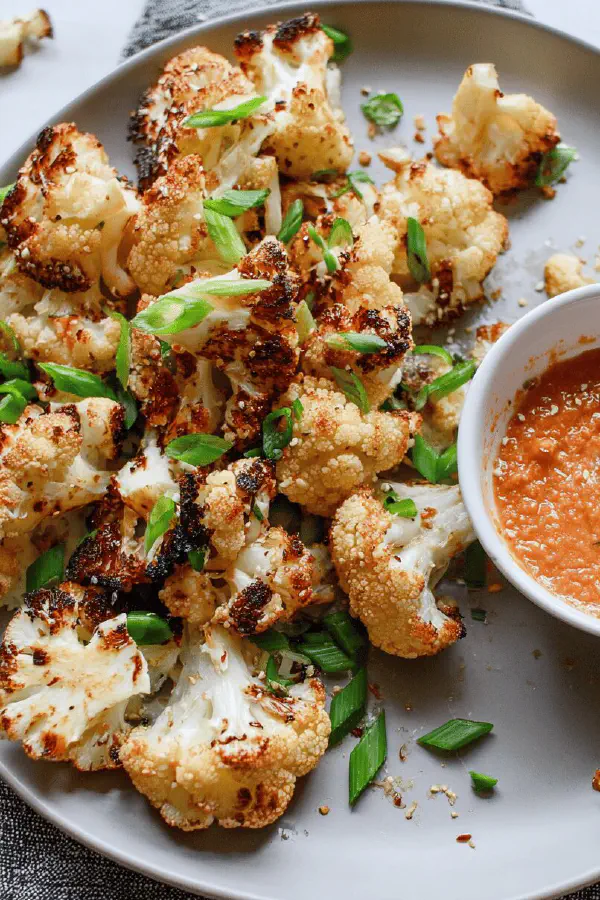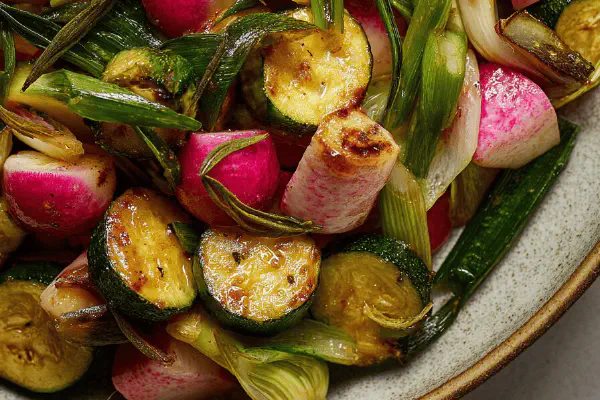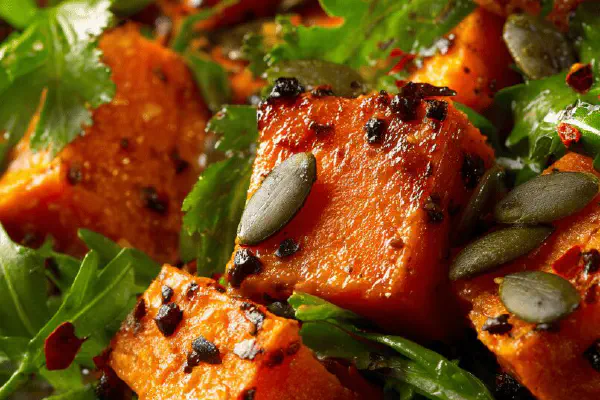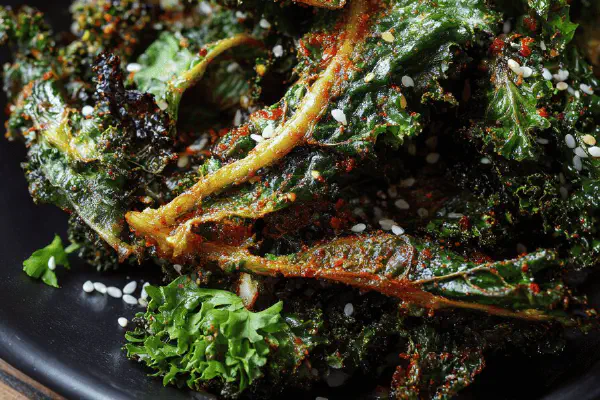Featured Recipe
Spicy Roasted Cauliflower Twist

By Kate
"
Cauliflower florets tossed in avocado oil with salt and smoked paprika, roasted to a dark golden crisp underneath. Flipped, roasted a bit more till edges crackle. Accompanied by a tangy tahini lime sauce with minced ginger replacing garlic, plus a hint of grated fresh turmeric for earthiness. Scattered toasted sesame seeds and sliced scallions on top for crunch and bite. Perfectly crackling crispness beats time on clock. Sensory cues—nutty aroma of roasting, popping oil, golden color, subtle crisp tears under fork. Simple swaps and timing tips included for spot-on roasting every time.
"
Prep:
7 min
Cook:
22 min
Total:
29 min
Serves:
4 servings
vegan
gluten-free
roasted
healthy
sidedish
Introduction
Roasting cauliflower until it’s got that dark golden crust underneath isn’t luck. It’s control on oven heat, oil, and timing. Forget the simmer softness; the goal is crunch, crackle, little burnt spots that scream flavor. Swap olive oil for avocado oil because it can take the heat without smoking. Smoked paprika replaces plain pepper for smoky warmth. Sauces matter—ditch the typical garlic-miso; tahini, lime, ginger, turmeric create layered brightness with earth and heat. Tossed scallions and toasted sesame finish with texture and bite. This isn’t casual cooking—it’s about reading the roast, hearing the pop, tapping the crisp. Not exact times executed blindly but confident sensory cues. The difference between flabby and fabulous lies in those subtle signs only practiced hands register.
Ingredients
For tahini lime sauce===
- 3 tablespoons tahini
- 1 tablespoon lime juice
- 1 teaspoon grated fresh ginger
- 1 teaspoon grated fresh turmeric (optional)
- 1 teaspoon honey or maple syrup
- 2 tablespoons water to thin
- 2 scallions, thinly sliced
- 1 teaspoon toasted sesame seeds
- ½ teaspoon crushed red chili flakes
Toppings===
About the ingredients
Cauliflower quantity altered slightly; slices bigger chunks for better roast surfaces. Avocado oil chosen to withstand 460°F without smoking, unlike olive oil which can break down at these high temps. Smoked paprika swaps for chili flakes in the rub for smoky heat under the surface, with chili reserved as final garnish to layer heat dimension. Tahini lime sauce switches up miso-garlic. Ginger replaces garlic for brightness and fresh kick; turmeric adds earthiness and color punch, a twist to deepen flavor profile. Use honey or maple syrup to balance tart lime, adjust water to get sauce consistency just right—too thick and tough to spread, too thin will slide off. Toasted sesame seeds are texture contrast, aromatic and nutty. Green onions sliced on top to add sharp freshness and crunch. Essential to dry cauliflower well before oiling; moisture is enemy to crisping. Oven rack position matters; place sheet in middle to top third for best heat circulation.
Method
Technique Tips
Preheat oven hotter than usual to encourage Maillard reaction on cauliflower surface, transforming sugars into complex flavors and crisp texture. Evenness of coating with oil is essential to prevent steaming and sogginess—no dry patches tolerated. Single layer mandatory; overcrowding traps steam and ruins crisp. Flip timing based on look and feel not clock—watch for dark amber spots underneath. The subtle crackle and slight resistance under a fork means done; do not wait for full hardness or it dries out. Sauce whipped while roasting saves time, making a pourable consistency crucial so it clings without drowning. Scatter toppings immediately after roasting to retain visual pop and textural contrast; heat from cauliflower brings out sesame aroma. If cauliflower cools and soggifies, blast back into oven briefly—roasting is forgiving if you know how to reset. Common error: flipping with broken technique causing florets to lose shape and fall apart. Use long spatula or tongs gently from edges. Overall, rely on your sensory cues—sound, smell, feel, sight—to guide rather than rigid timing.
Chef's Notes
- 💡 Always rinse cauliflower well. Dry it—very dry. Moisture means soggy florets. Use kitchen towels or let it sit. Helps the oil coat evenly.
- 💡 Preheat oven to high heat. 460°F minimum. No lower temps. Watch for browning during roasting. Smell the sweetness as sugars caramelize. That's key.
- 💡 Coat evenly with oil. Two tablespoons for one head means glistening surfaces. No dry spots. Not a soaking bath either—just right amount needed.
- 💡 Use tongs or a spatula for flipping. Be gentle but thorough. Tenderly lift and turn. You want them sturdy, check for dark spots; don’t rush.
- 💡 If soggy later, a quick roast at high heat can save it. Three to four minutes. Listen for that crisping sound again. Reevaluate texture.
Kitchen Wisdom
How to make it less spicy?
Reduce chili flakes completely or use sweet paprika instead. Lower smoked paprika for few people.
What if I don't have tahini?
Miso is an option but alters taste. Yogurt can work too but texture changes. Play with lime for balance.
Can I use frozen cauliflower?
Not recommended; frozen waterlogged. Fresh promotes even roasting. Stick to fresh for better crisp.
Storage tips?
Store leftovers in airtight container. Keep in fridge three to four days. Reheat at high heat till crisp again.



